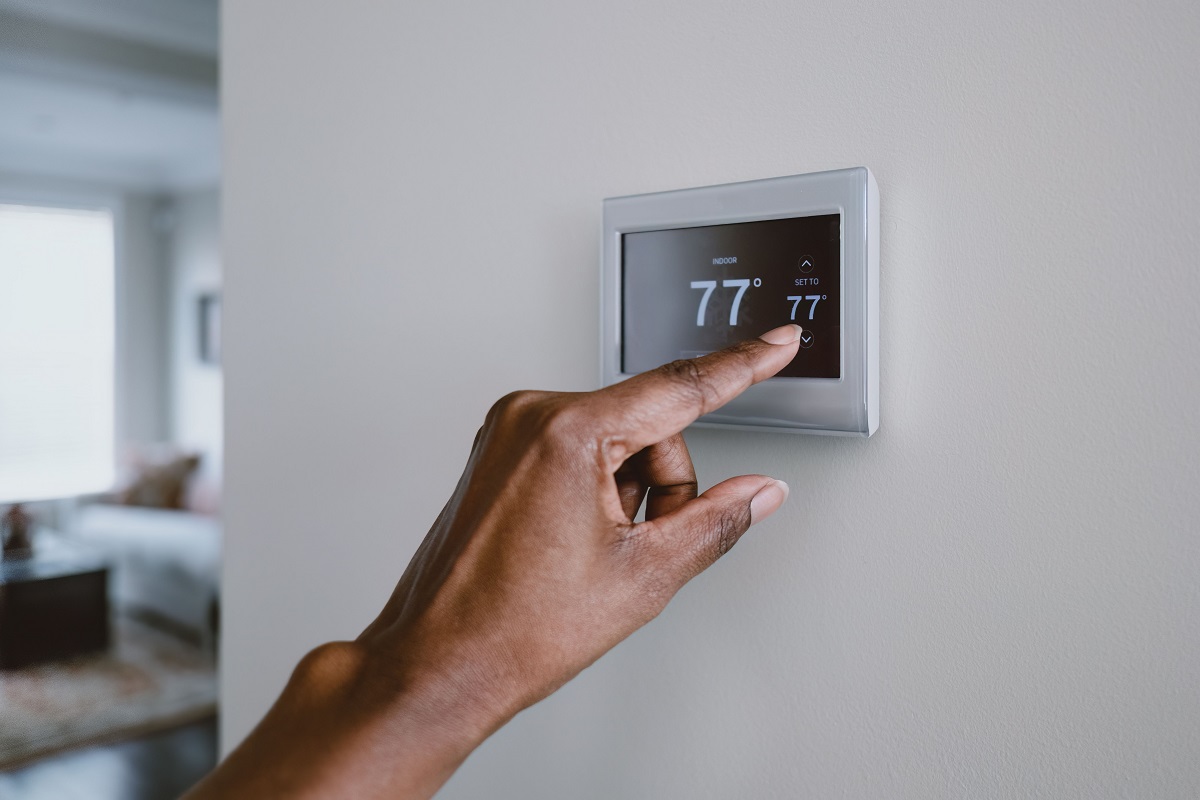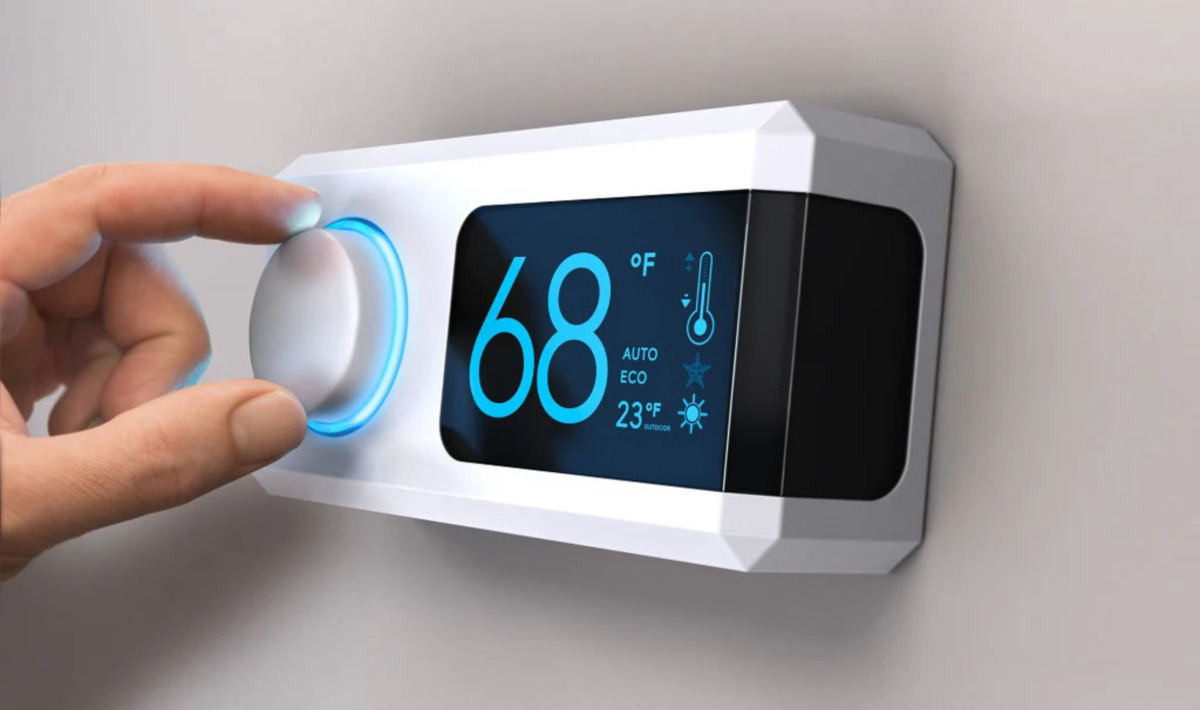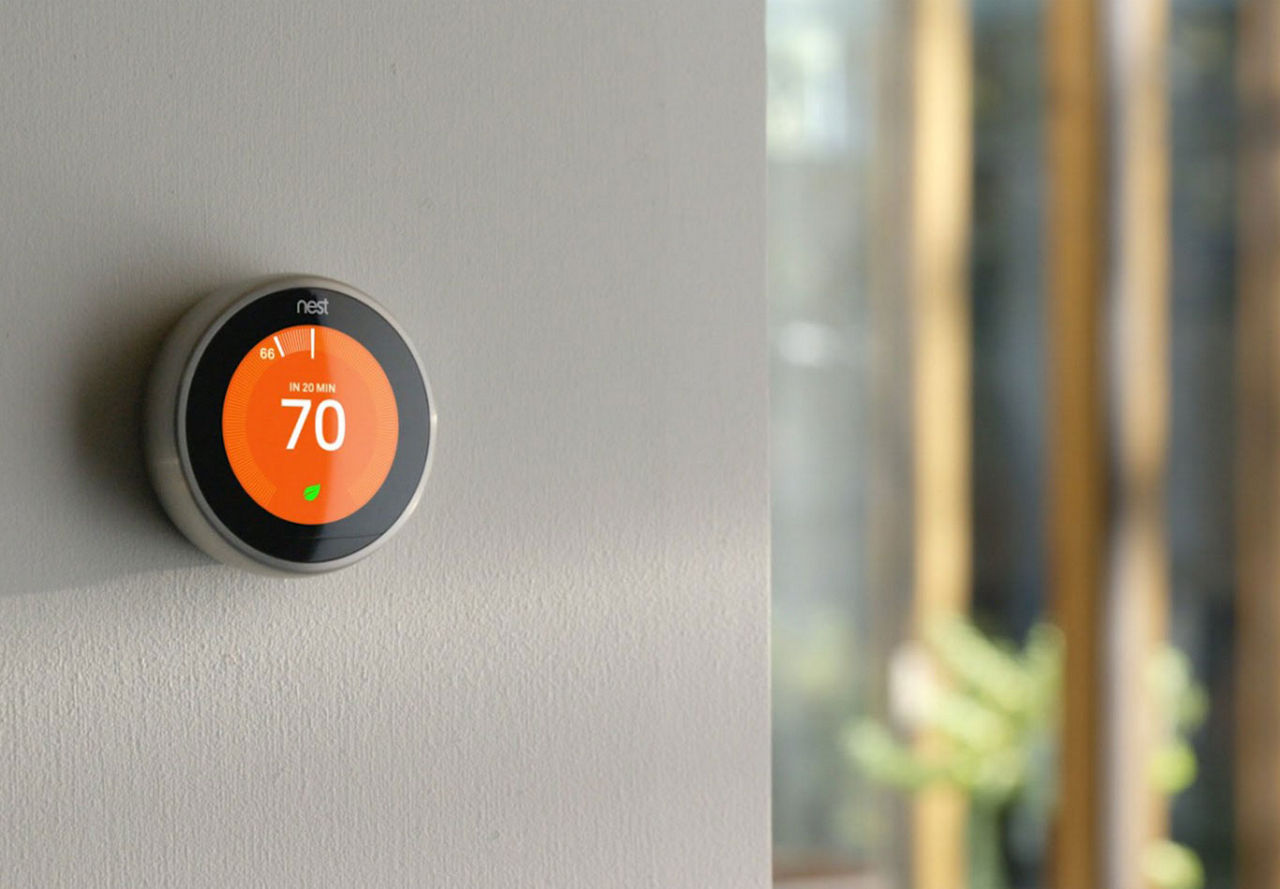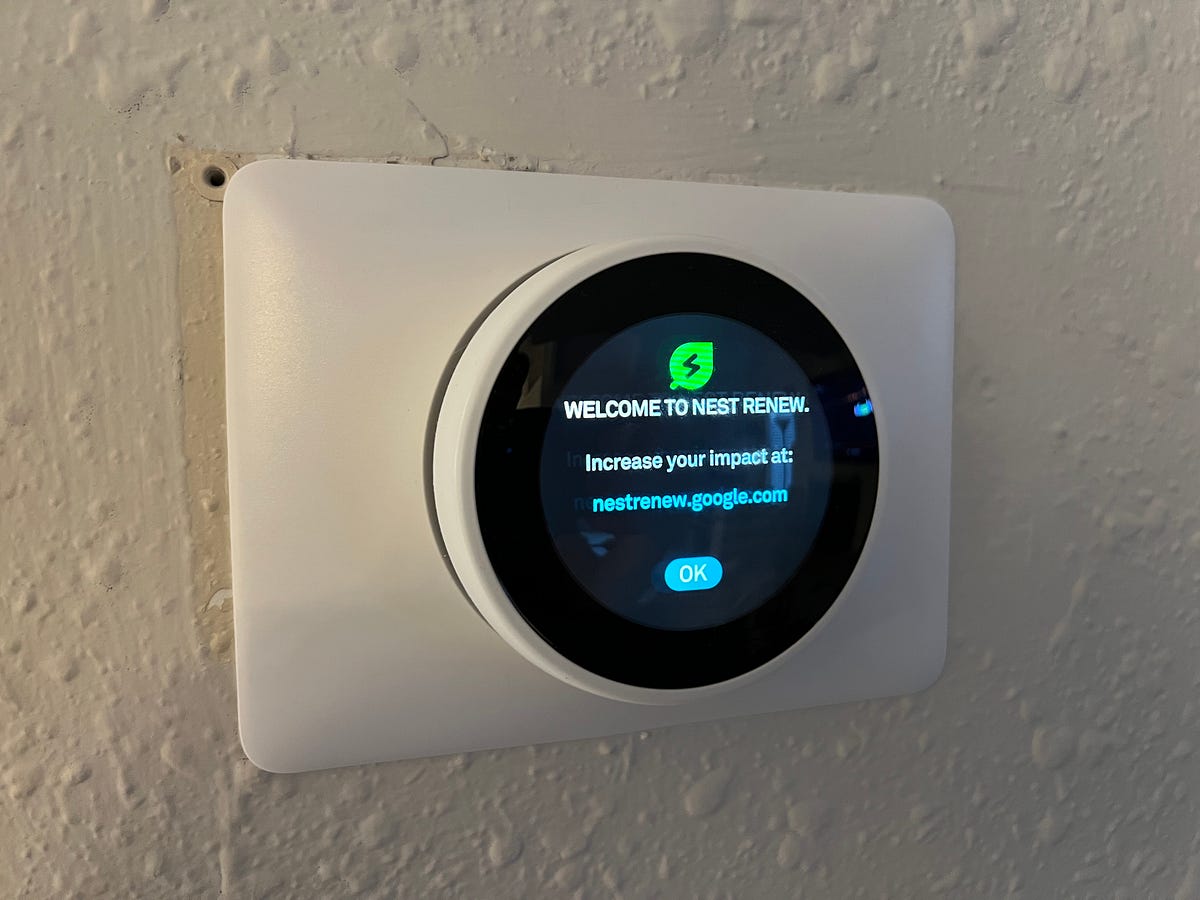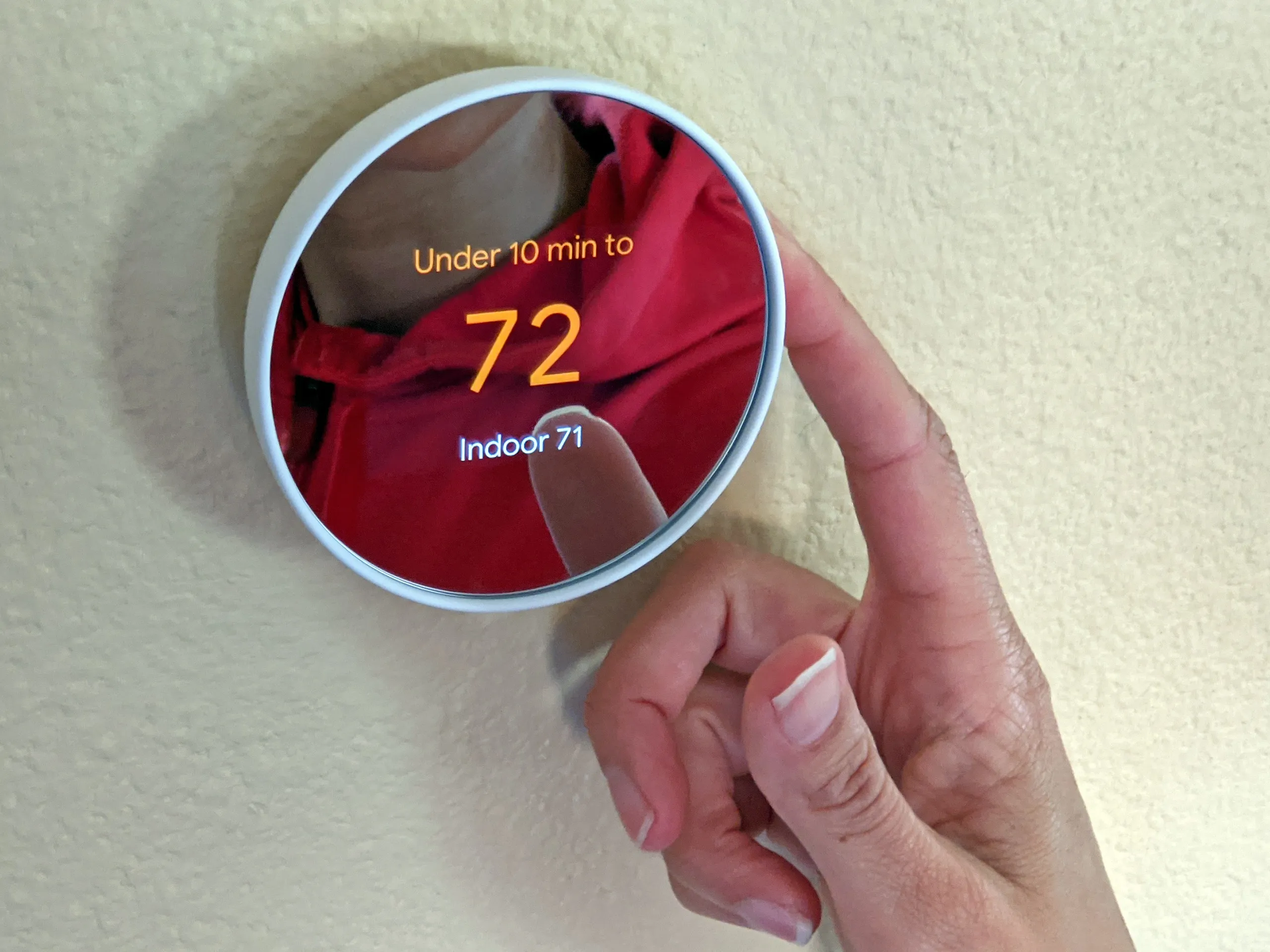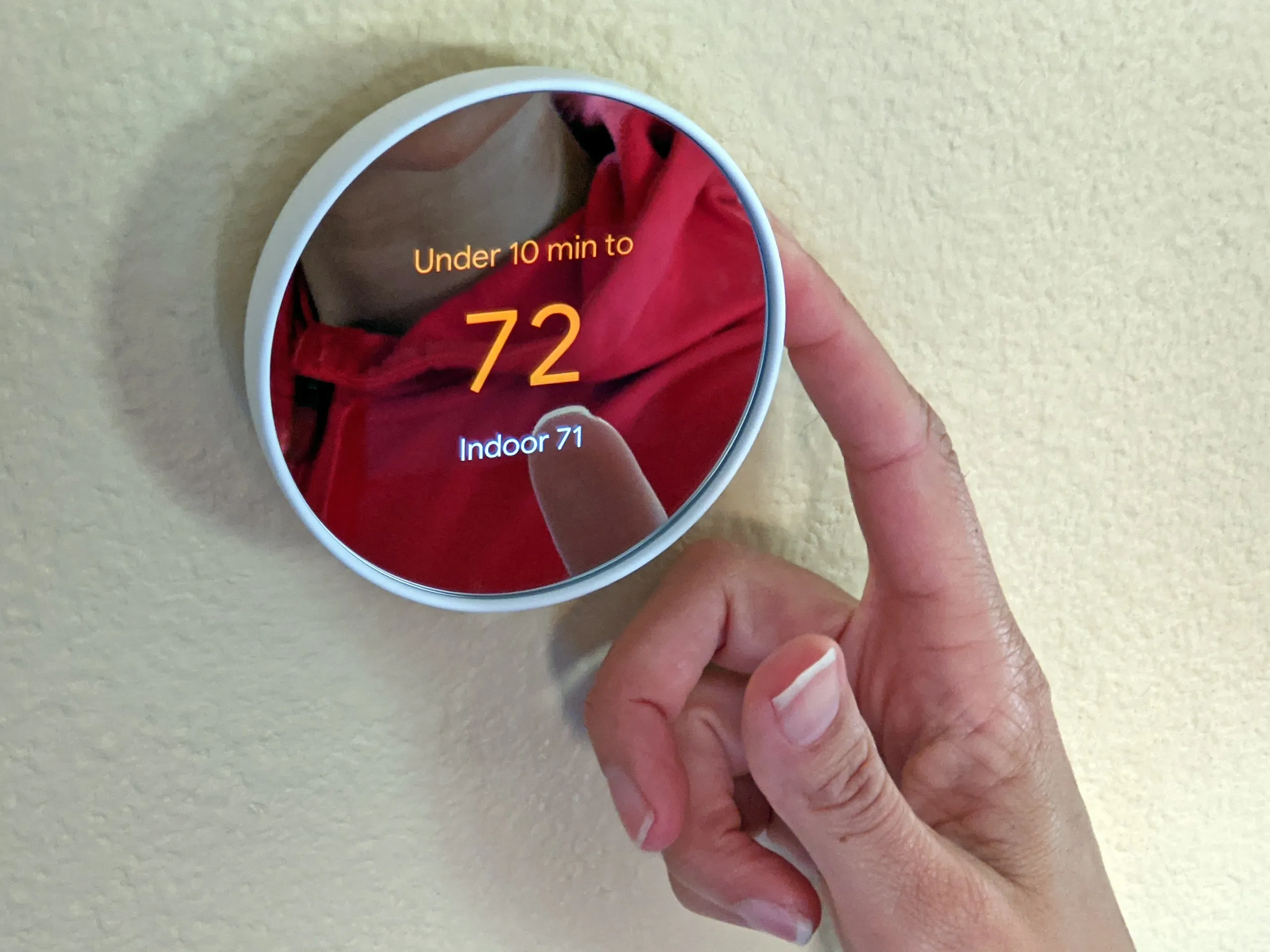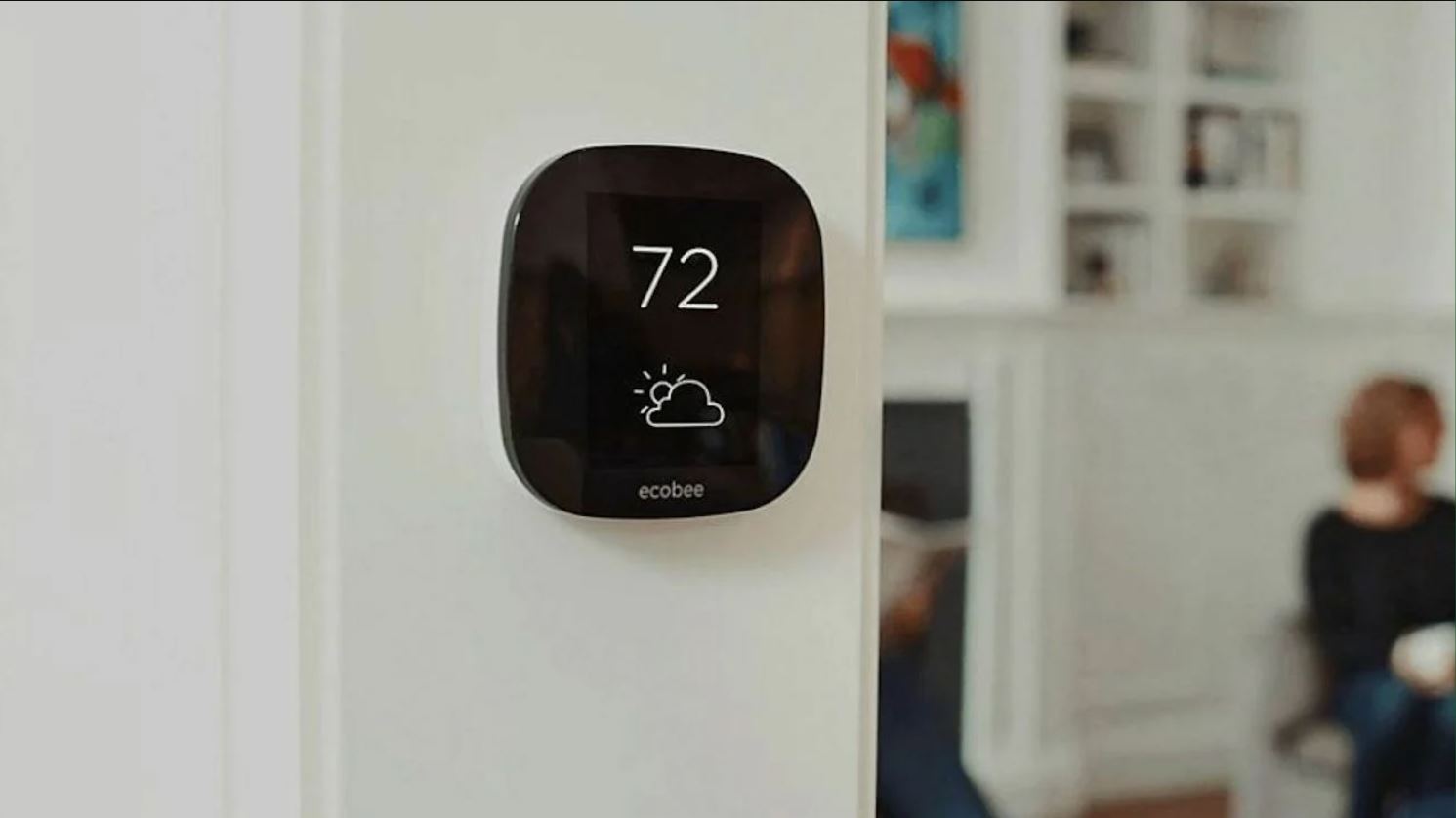Introduction
Welcome to the era of smart thermostats, where you have the power to control your home’s temperature with the touch of a button. These innovative devices offer convenience, comfort, and energy efficiency like never before. One of the key features of a smart thermostat is the ability to set it to a lower temperature when you’re away from home. But why should you bother? In this article, we will explore the benefits of setting your smart thermostat 6 or 8 degrees lower when you’re not at home.
Traditional thermostats simply maintain a constant temperature, regardless of whether you’re present or not. This means your HVAC system continues to work at full capacity, consuming unnecessary energy and driving up your utility bills. Smart thermostats, on the other hand, allow you to customize the temperature settings based on your daily routines and preferences. By setting your thermostat lower when you’re away, you can optimize your energy usage and reduce your carbon footprint.
Not only does setting your smart thermostat lower when you’re away save energy, but it also saves you money. According to the U.S. Department of Energy, reducing your thermostat’s temperature by 7-10 degrees for 8 hours a day can result in an energy cost savings of around 10% per year. Considering that heating and cooling account for a significant portion of your home’s energy consumption, this reduction can add up to substantial savings over time.
Furthermore, setting your smart thermostat lower when you’re away can improve the overall lifespan of your HVAC system. By reducing the strain on the system and preventing it from running unnecessarily, you can extend its lifespan and avoid expensive repairs or replacements in the long run.
With advanced features like geofencing and learning algorithms, smart thermostats can adjust the temperature based on your daily patterns and preferences. This means your home will be at an optimal temperature when you return, without the need for manual adjustments. It’s like having a personal climate control system that anticipates your needs.
In the following sections, we will discuss how to set your smart thermostat to a lower temperature, the benefits of doing so, tips for maximizing energy savings, and address common concerns that you may have. So, let’s dive in and discover how you can harness the full potential of your smart thermostat to create a more comfortable and energy-efficient home!
Why should you set your smart thermostat 6 or 8 degrees lower when away?
Setting your smart thermostat 6 or 8 degrees lower when you’re away from home may seem like a significant temperature drop, but it offers numerous benefits for both your wallet and the environment. Let’s take a closer look at why you should consider this energy-saving practice.
1. Energy and cost savings: The primary reason to set your smart thermostat to a lower temperature when you’re away is to save energy and reduce your utility bills. By decreasing the temperature by 6 or 8 degrees, your HVAC system doesn’t have to work as hard to maintain the desired temperature. This results in reduced energy consumption and, consequently, lower heating or cooling costs. The longer the duration you’re away from home, the greater the potential for energy and cost savings.
2. Environmental impact: By conserving energy, you’re also reducing the environmental impact of your home’s energy usage. Heating and cooling account for a significant portion of residential energy consumption and contribute to greenhouse gas emissions. By setting your smart thermostat lower when you’re away, you’re doing your part to mitigate climate change and protect the planet for future generations.
3. Increased energy efficiency: Setting your smart thermostat to a lower temperature when you’re away promotes energy efficiency. Smart thermostats can learn your daily routines and adjust the temperature accordingly. By letting the temperature drop while you’re not at home, you’re ensuring that energy is only used when necessary. When you return home, your smart thermostat can quickly bring the temperature back to your desired comfort level.
4. Comfort optimization: While energy savings are important, you may be concerned about coming home to a chilly or sweltering house. Fortunately, smart thermostats offer advanced features like geofencing, which uses your smartphone’s location to determine when you’re nearing home. With geofencing enabled, your smart thermostat can start adjusting the temperature to a comfortable level, so you arrive to a cozy or cool home, depending on the season.
5. Improved HVAC system longevity: Another advantage of setting your smart thermostat lower when you’re away is the potential for extending the lifespan of your HVAC system. Constantly running your heating or cooling system at full capacity can put a strain on it, leading to more frequent breakdowns and the need for costly repairs. Allowing your HVAC system to rest and reducing unnecessary runtime can help prevent wear and tear, increasing its overall longevity.
Now that you understand the benefits of setting your smart thermostat 6 or 8 degrees lower when you’re away, let’s explore how you can easily implement this energy-saving practice.
How can you set your smart thermostat to a lower temperature?
Setting your smart thermostat to a lower temperature when you’re away is a simple process and can be done in a few easy steps. Here’s how you can do it:
1. Install a smart thermostat: If you haven’t already, you’ll need to install a smart thermostat in your home. Choose a model that suits your needs and is compatible with your HVAC system.
2. Connect to your home’s Wi-Fi network: Follow the manufacturer’s instructions to connect your smart thermostat to your home’s Wi-Fi network. This will enable you to control it remotely using a smartphone app or a web browser.
3. Set up your preferences: Use the manufacturer’s app or web interface to configure your smart thermostat settings. This may involve setting up schedules for when you’re typically away from home, or enabling geofencing to detect your smartphone’s location and automatically adjust the temperature when you leave and return.
4. Adjust the temperature for away mode: Look for the “away” or “vacation” mode on your smart thermostat. This mode allows you to set a lower temperature that will be maintained when you’re not at home. Typically, a decrease of 6 or 8 degrees from your usual comfort level is recommended for maximum energy savings.
5. Customize temperature settings: Some smart thermostats offer additional features that allow you to fine-tune your settings. You may have the option to set different temperature profiles for weekdays and weekends, or create specific temperature schedules based on your lifestyle and preferences.
6. Monitor and adjust as needed: Once you’ve set your smart thermostat to a lower temperature when you’re away, you can monitor its performance through the app or web interface. This allows you to make adjustments as needed to optimize your energy savings and comfort levels.
Remember, the goal is to find the right balance between energy savings and comfort. It may take some trial and error to determine the ideal temperature settings for your home, but with the flexibility and convenience of a smart thermostat, you have the power to create a comfortable and energy-efficient environment.
What are the benefits of setting your smart thermostat lower when you’re not at home?
Setting your smart thermostat to a lower temperature when you’re away from home offers a range of benefits that go beyond just saving energy. Let’s explore some of the advantages of adopting this energy-saving practice:
1. Energy and cost savings: By setting your smart thermostat lower when you’re not at home, you can significantly reduce your energy consumption and lower your utility bills. The longer you’re away, the more energy you conserve, leading to greater cost savings in the long run.
2. Increased environmental sustainability: Climate change is a pressing global issue, and every small action counts towards reducing our carbon footprint. By setting your smart thermostat lower when you’re away, you contribute to reducing greenhouse gas emissions associated with energy production, which helps protect the environment and combat climate change.
3. Extended HVAC system lifespan: Allowing your HVAC system to take a break by setting a lower temperature when you’re not at home can help extend its lifespan. This is because the system has less strain and operates less frequently, reducing the chances of mechanical failures and the need for costly repairs or replacements.
4. Enhanced energy efficiency: Smart thermostats offer advanced features like learning algorithms that analyze your daily routines and adjust the temperature accordingly. By setting your smart thermostat lower when you’re away, you optimize energy efficiency by avoiding wasted energy and only using it when needed.
5. Convenience and comfort: While saving energy is essential, coming home to a comfortable temperature is equally important. Smart thermostats can anticipate your return through geofencing, learning your patterns, and adjusting the temperature accordingly. This means you can enjoy a comfortable home without having to manually adjust the thermostat.
6. Remote control and accessibility: Smart thermostats can be controlled remotely through smartphone apps or web interfaces, allowing you to adjust the temperature even when you’re not at home. This feature comes in handy if your plans change or if you want to arrive home to an already adjusted temperature.
7. Peace of mind: By setting your smart thermostat lower when you’re not at home, you gain peace of mind knowing that you’re taking proactive steps to conserve energy and reduce your environmental impact. It’s a small but meaningful action that contributes to a more sustainable future.
By embracing the benefits of setting your smart thermostat lower when you’re not at home, you not only save on energy costs but also play a part in creating a more environmentally friendly and comfortable living space.
Tips for maximizing energy savings with your smart thermostat
Your smart thermostat is a powerful tool for optimizing energy efficiency and reducing your carbon footprint. Here are some tips to help you maximize energy savings and make the most of your smart thermostat:
1. Establish temperature schedules: Take advantage of your smart thermostat’s scheduling capabilities. Set different temperature profiles for various times of the day and days of the week. This ensures that your home is only being heated or cooled when needed, saving energy when you’re typically away.
2. Utilize geofencing: Enable geofencing on your smart thermostat to automatically adjust the temperature based on your location. This way, your thermostat will know when you’re leaving or returning home and can adjust the temperature accordingly. This feature ensures that you always come back to a comfortable home without wasting unnecessary energy.
3. Take advantage of vacation mode: If you’ll be away for an extended period, utilize your smart thermostat’s vacation mode. This setting allows you to set a specific temperature for the duration of your absence, optimizing energy savings while maintaining a safe temperature range to prevent any damage to your home.
4. Utilize temperature setbacks: Experiment with temperature setbacks during times when you’re typically away or sleeping. By setting the temperature a few degrees cooler in the winter or warmer in the summer, you can save on energy without sacrificing comfort. Your smart thermostat can automatically adjust the temperature back to your desired level before you wake up or return home.
5. Monitor and adjust your settings: Regularly monitor your smart thermostat’s energy usage data to track your progress and identify areas for improvement. Take note of any patterns or habits that may impact energy consumption and adjust your temperature schedules accordingly.
6. Leverage additional smart home integration: If you have other smart home devices, explore how they can work together with your smart thermostat to optimize energy usage. For example, you can integrate your smart thermostat with smart lighting systems to further reduce energy consumption when no one is at home.
7. Keep your smart thermostat firmware up to date: Smart thermostat manufacturers often release firmware updates that enhance performance and introduce new features. Keeping your smart thermostat’s firmware up to date ensures you benefit from the latest optimizations and improvements for energy efficiency.
8. Use energy-saving modes when applicable: Some smart thermostats have dedicated energy-saving modes that take into account factors like humidity, occupancy, and outside weather conditions. Enable these modes to further optimize energy savings based on specific situational factors.
By implementing these tips, you can maximize energy savings and create a more sustainable and comfortable living environment with your smart thermostat.
Common concerns about setting the thermostat lower when away
While setting your thermostat lower when you’re away can bring numerous benefits, it’s natural to have some concerns. Let’s address some common concerns and provide answers to alleviate any worries:
1. Comfort: One concern is coming home to a cold or hot house. However, smart thermostats offer features like geofencing, which can automatically adjust the temperature as you approach home, ensuring it’s comfortable when you arrive.
2. Pets: If you have pets at home, you may worry about their comfort. Ensure that the temperature setback you choose is suitable for their well-being. Generally, a few degrees lower or higher should not be a concern for most pets, especially when you incorporate pre-heat or pre-cool features to bring the temperature back to normal before they arrive.
3. Frozen pipes: Cold weather and low temperatures can increase the risk of frozen pipes. However, most homes are built to withstand lower temperatures unless there are extreme weather conditions. To mitigate this risk, set your thermostat to a minimum temperature that prevents freezing but still conserves energy.
4. Efficiency claims: Some people may doubt the advertised efficiency claims of smart thermostats. However, studies have shown that properly using a smart thermostat can result in energy savings and cost reductions. Manufacturer data, as well as government and third-party studies, can provide additional evidence of the energy-saving potential.
5. Increased HVAC wear and tear: There may be concerns about frequent cycling of the HVAC system and increased wear and tear. However, reducing the workload on your HVAC system when you’re away can actually extend its lifespan. It’s designed to handle temperature fluctuations, and the energy saved outweighs the minimal impact on the system.
6. Inconvenience: Some people may find it inconvenient to adjust the thermostat manually or through an app whenever they leave or return home. However, smart thermostats are designed to automate this process. Utilize features like geofencing or create temperature schedules to minimize any inconvenience.
7. Compatibility: Compatibility concerns may arise when installing a smart thermostat. Before purchasing one, ensure it works with your HVAC system. Most smart thermostat manufacturers provide compatibility checkers or support to assist with any concerns you may have.
8. Wi-Fi and power outages: Loss of power or Wi-Fi connectivity can affect the functioning of smart thermostats. However, many smart thermostats have internal backup batteries to retain settings during power outages. Additionally, Wi-Fi connectivity is not a constant requirement for basic thermostat functioning.
Addressing these common concerns and understanding the features and capabilities of your smart thermostat can help you overcome any hesitations and fully embrace the energy-saving benefits it offers.
Conclusion
Setting your smart thermostat 6 or 8 degrees lower when you’re away from home is a simple yet effective practice to save energy, reduce costs, and lead a more sustainable lifestyle. By taking advantage of the advanced features and capabilities of smart thermostats, you can optimize energy usage while maintaining a comfortable living environment.
Throughout this article, we have explored the various benefits of setting your smart thermostat lower when away. From energy and cost savings to extended HVAC system lifespan and enhanced energy efficiency, the advantages are clear. With the convenience of remote control, scheduling features, and advanced technologies like geofencing, smart thermostats have made it easier than ever to achieve these benefits.
To maximize energy savings with your smart thermostat, we provided several tips to help you make the most of its capabilities. By establishing temperature schedules, utilizing geofencing, and monitoring your settings, you can achieve optimal energy efficiency and comfort while minimizing energy waste.
It’s important to address common concerns that may arise when considering setting the thermostat lower when away. Factors like comfort, pets, frozen pipes, efficiency claims, HVAC wear and tear, inconvenience, compatibility, and power outages have been discussed to alleviate any worries you may have.
In conclusion, setting your smart thermostat 6 or 8 degrees lower when you’re away is a smart and eco-friendly choice. With the potential for significant energy and cost savings, reduced environmental impact, and increased convenience, it’s a win-win situation for both your wallet and the planet. Embrace the power of your smart thermostat and set it lower when you’re not at home – it’s a small change that can make a big difference in your energy consumption and overall sustainability.







